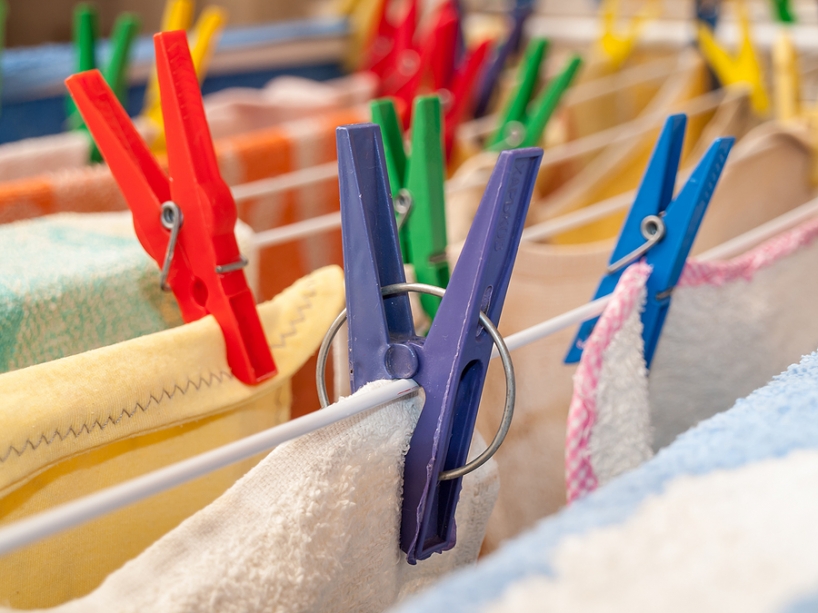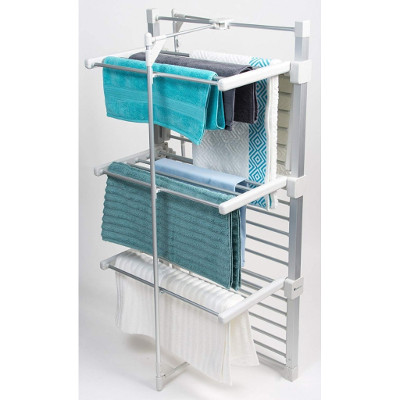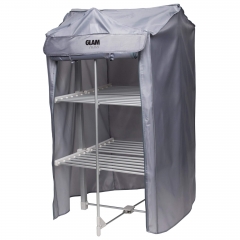
November 15th, 2021 by
In the winter, we have to get more creative with our laundry as outdoor line-drying becomes increasingly difficult. We take a look at the four main methods of drying clothes indoors: tumble dryers, radiators, airers, and heated airers to see how they compare on the most important considerations including cost/energy efficiency, care, and performance.
Cost/energy efficiency
We take a look at both cost to buy and cost to run. We have linked cost and energy efficiency here as clearly, the less energy used, the lower the running costs.
Tumble dryers
A basic, vented tumble dryer starts from around £150 but for an energy-efficient A-rated condenser dryer you could be looking at upwards of £250 and often much more. On average, a tumble dryer costs around 67p per cycle to run.
Radiators
Of course, there are no additional purchase costs for radiators as we already have them for our central heating. However, there are additional running costs. While it might seem like an efficient way to do it as you would be heating the radiators anyway, covering them up with wet clothes will block heat from the room. Not only does this mean you don’t get the benefit of the heat, it makes your boiler work harder to increase the temperature in the room, using more energy. Because the energy source is gas, and the cost of gas is spiralling due to the energy crisis, this can get expensive.
Airers
You can buy a basic airer or a clotheshorse for as little as £15-20 and clearly, they don’t cost anything to run at all as they don’t use any energy.
Heated airers
 Costs to buy a heated airer start from around £40 and can rise depending on size and whether they come with any accessories, such as a zip cover. In terms of running costs, they are very energy efficient and cost around just 4p an hour.
Costs to buy a heated airer start from around £40 and can rise depending on size and whether they come with any accessories, such as a zip cover. In terms of running costs, they are very energy efficient and cost around just 4p an hour.
Performance
Getting clothes dry quickly helps get the job done and out of the way, and nobody wants huge piles of laundry hanging around.
Tumble dryers
Tumble dryers are often the fastest way of getting clothes dry, as they can often dry a full load in under 2 hours. However, they use quite a bit of energy to do so and can make clothes feel stiff and bobbly.
Radiators
Radiators don’t tend to be too efficient as they will dry the items placed directly on them quickly, but it can take a while for the heat to penetrate through to any other items on drying racks. You’ll need to regularly move items around for the best results.
Airers
Airers do poorly in this area as they can take many hours to dry, due to there being no heat source. You can place them in front of a radiator or fire to speed things up but be careful not to block heat to the room or to get too close to high heat sources.
Heated airers
After tumble dryers, heated airers are the most efficient as they use gentle heat, and every item has contact with it. You can speed the drying process up even more by using a model with a zip cover as this retains the heat and allows it to circulate.
Fabric care
Washing clothes is an essential part of keeping them in good condition and, due to the climate crisis, we’re all being encouraged to make clothes last longer rather than buy new ones so how we dry them matters.
Tumble dryers
Tumble dryers are great at drying clothes quickly, but all that heat can be damaging to fabrics, especially delicate items. Always dry with care in a tumble dryer as they are notorious for shrinking and damaging clothes.
Radiators
Drying clothes on radiators will usually be ok in terms of fabric care but be careful not to leave them on too long as they can go stiff or sometimes even mark a little.
Airers
Airers won’t damage clothes at all, though the time they take to dry can sometimes leave them smelling a little musty.
Heated airers
Heated airers care for clothes well as they use gentle heat. Our model also makes use of a zip cover, which keeps the air circulating around the clothes in a more natural way, helping them to dry softly.
Glamhaus 3 Tier Clothes Heated Airer
Price: £115.00
Buy Now
Risk
All appliances come with some risks, but how do these measure up?
Tumble dryers
Tumble dryers have had some bad press over the last few years due to some models overheating. In theory, all affected appliances should have been recalled and replaced and they should be much safer now but it’s always best to use with care, including keeping filters clean and not leaving them on when you’re in bed or out of the house.
Radiators
There is no safety risk as such but draping wet clothes on radiators does run the risk of making walls damp, which can be quite damaging to your home.
Airers
There are no risks with airers, other than the potential to place too close to a fire.
Heated airers
While no electrical appliance can be said to be without risk completely, there is minimal risk with a heated airer. Ours is fitted with overheat protection which shuts the unit down if it gets too hot.
Comments
Leave a reply
Your e-mail address will not be published. All fields are required


